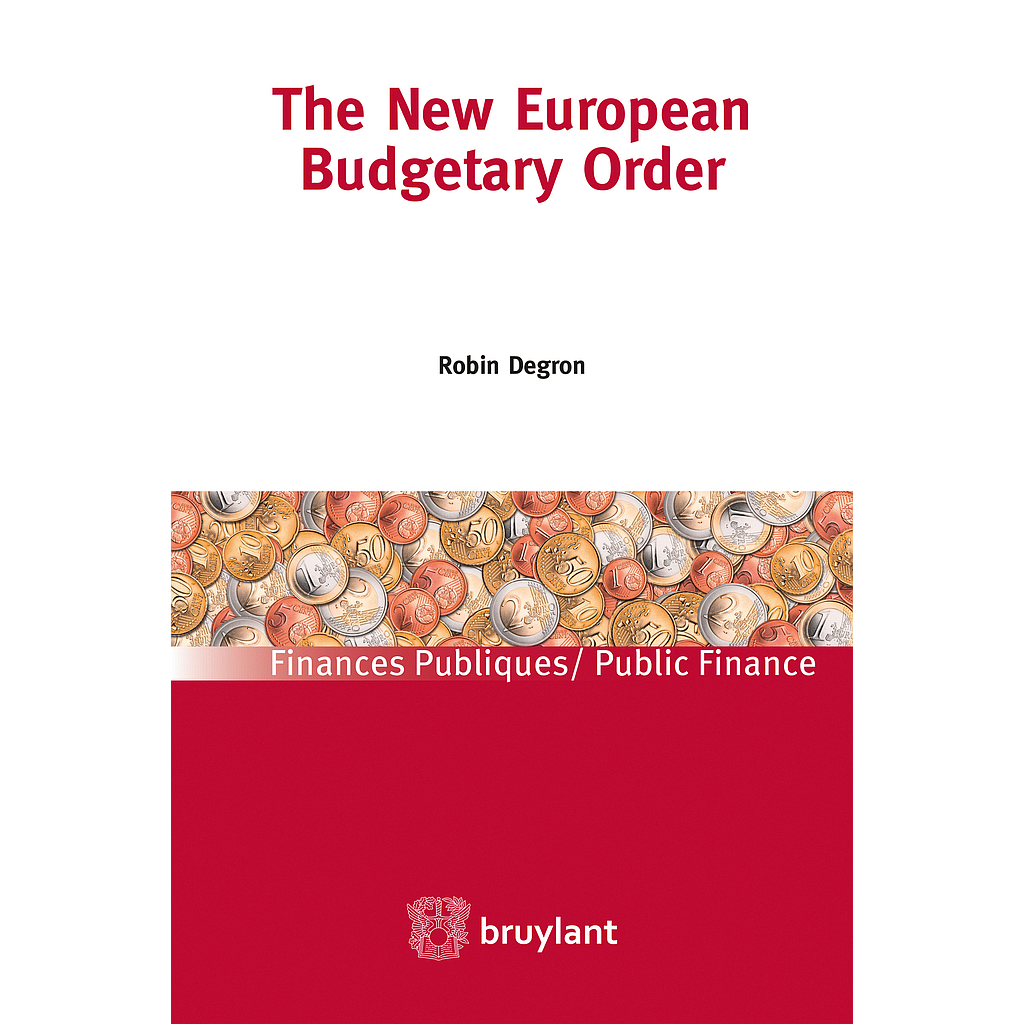The new European budgetary order
Robin DEGRON
Availability: Out of stock - available in 5 open days
- Categories: Budget
- Publisher: BRUYLANT EDITIONS
- ISBN: 9782802762638
- Publication Date: 28/09/2018
- Binding: Paperback
- Number of pages: 190
Summary
The Sovereign debt crisis pushed the EU to take a new step to the common
financial rules. After some years of ‘soft budgetary carefreeness’, the
European Budgetary Treaty boosted the movement of budgetary convergence
in the EU. The ‘Six Pack’ and the ‘Two Pack’ consolidated the
effectiveness of a new European budgetary order founded by the
Maastricht Treaty and the Stability and Growth Pact. Even if mechanisms
adopted by the Member States are formally different in law, conditions
of European budgetary orthodoxy have been definitively hardened. This
new rigor has a great impact on all the public administrations, as
defined by the European Accounts System and Eurostat. The EU is a
key-player of the budgetary game. This great power makes the EU
accountable to the general economic situation within Europe and amongst
all Member States. Budgetary regulation must be conciliated with
preservation of some investment means to develop potential growth on the
continent. ‘Giant in law’, the EU has to be responsible from an
economic point of view.
The problem is that, from a budgetary
standpoint, the EU remains a ‘dwarf’. The European general budget is
about 1% of the EU gross national income. The budgetary power of the EU
is less than one twentieth of the USA federal financial power. Balance
between ‘budgetary dwarf ’ and ‘giant in law’ is characteristic of
‘adolescence’ of the EU finances. Natural consequence of this situation,
the EU capacities for redistributing and stabilization are still
relatively limited. To overtake this powerlessness, the EU has used no
budgetary tools by appealing to the European Investment Bank and the
European Investment Fund. However, the ability of the EU to support
public investment is not sufficient today to promote an authentic
economic relaunching policy and to support the global competition,
especially with the USA and China. With a ‘powerful brake’ and a ‘poor
accelerator’, the risk is the European public investments continue to
stand by. This is the investment paradox of the European budgetary
order.
Will the next negotiation on the multiyear financial
framework post 2020 be able to change the point ? It is not sure,
especially in the Brexit context. Negotiating an European financial
agenda is always long and difficult. But, the exit of the United Kingdom
could makes the game more disputed than ever. A thing is clear : beyond
the technical and financial sizes of the new roadmap proposals
established by the Commission, the democratic control of the European
Parliament is still limited. The EU budgetary framework and timetable
are too inert, not enough reactive, far from European citizens actually.
In the historical moments we live, it is certainly a strategic mistake
to not involve much more citizens and their representatives in the
crucial negotiation on the long-term finances of the EU. This is the
technocratic risk of the new European budgetary order.
Table of contents
Introduction
Chapter 1. The European accounting system
Chapter 2. The European budgetary rules
Chapter 3. A diverse Europe in front of unified rules
Chapter 4. The European budget
Chapter 5. Perspectives post 2020 for the EU
Conclusion
Bibliography
List of acronyms
List of figures and boxes
